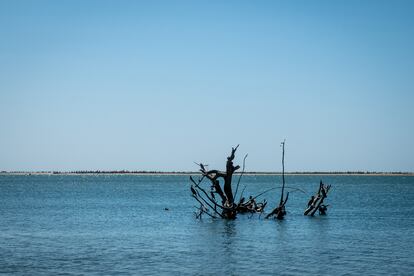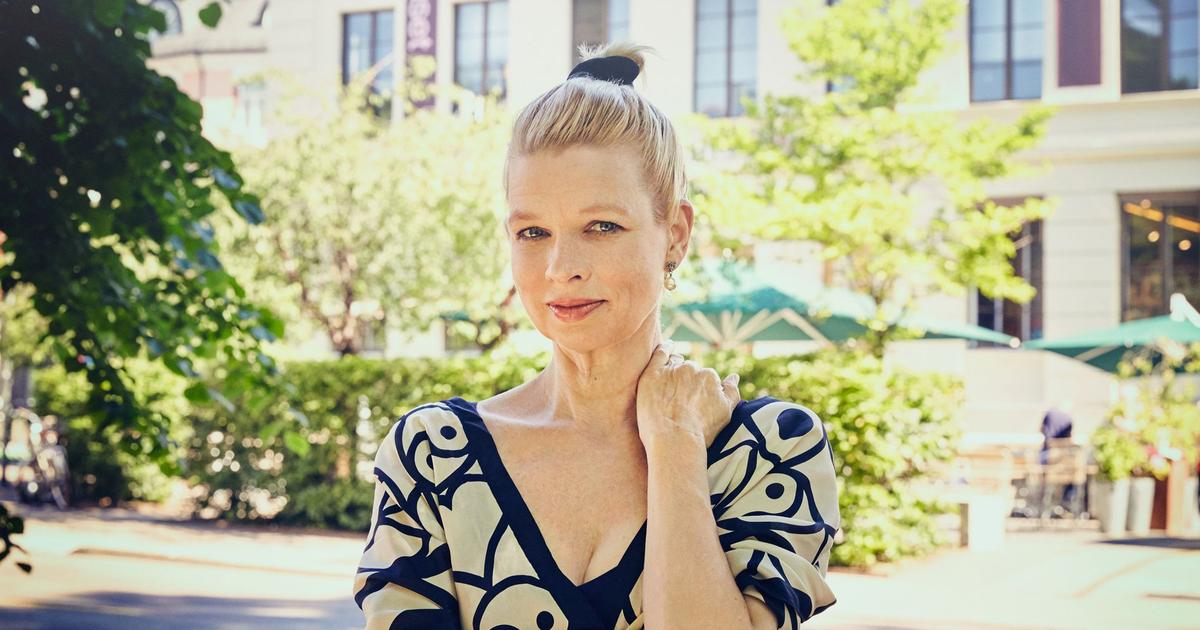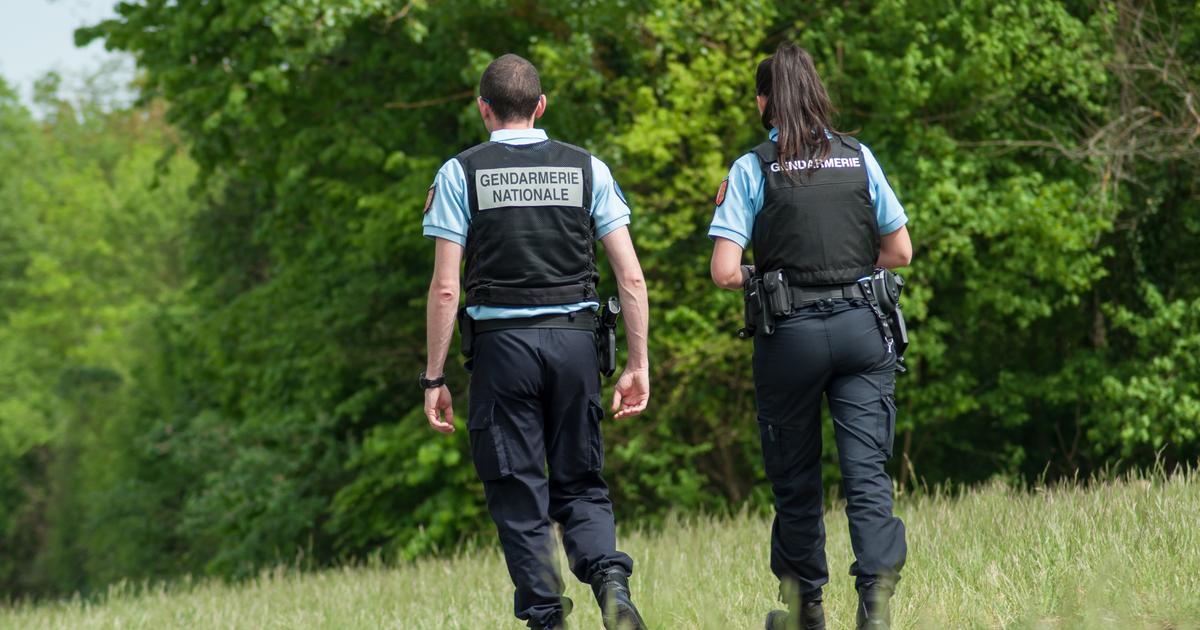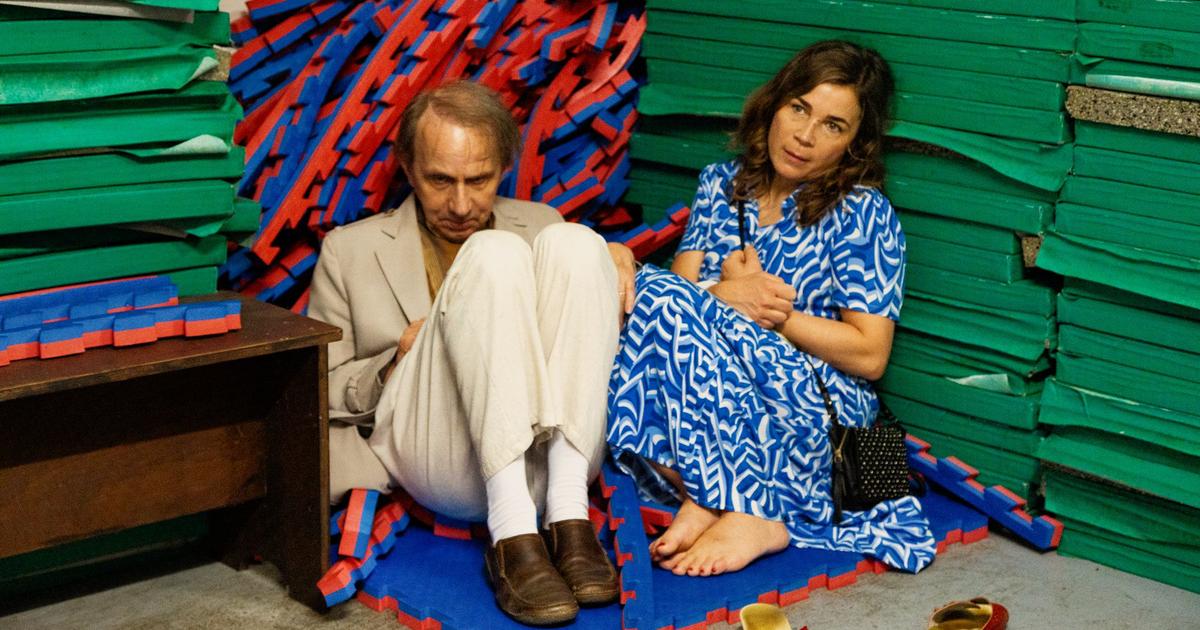Ahmet Sène Diagne cautiously maneuvers his wooden canoe through the sandy areas near the Senegalese coast.
With an inquisitive gaze, he walks through the mangroves and pine forests of the islets.
Suddenly, he points to a dead tree sticking out of the water.
Your child looks up.
"There was the town square," he says.
Ahmet Sène Diagne and her son sail in the direction of one of the villages flooded by rising sea levels.
Joost Bastmeijer
"It was one of the largest trees in the city," he says, "that's why the sea couldn't swallow it."
Some time ago the tree was next to the house of his first wife.
Under its green branches they said "yes, I do" 36 years ago.
"Every time I see this tree I remember a lot of things from the past," he says.
The only thing that remains of Doun Bada Dièye is the large tree in the town square.Joost Bastmeijer
SPECIAL |
ONE YEAR AT SAINT LOUIS
Future Planet reported during 2019 everything that happened in this city threatened by climate change and precariousness.
We tell it from there in this chronology
A human error
Before Ahmet and the 800 local people were forced from their homes in 2012, Doun Daba Dièye was a vibrant fishing community in northwestern Senegal.
Fishing was practiced in the lake that rises from the Senegal River, which flows into the sea through this area.
Although the town is close to the Atlantic coast, it was protected from the waves by a long strip of land called the Barbary Language.
But in 2003, panic spread: the heavy rains that swelled the Senegal River threatened to wreak havoc in Saint Louis, the city that towers over the fishing village.
The local authorities came up with an idea: dig a canal through the Barbary Tongue, the long cape that protected the peoples from the sea.
According to his calculations, the excess water from the river would go down that branch.
Ahmet Sène Diagne looks towards the opening, six kilometers wide, in the Barbary Tongue.
When this opening to the sea was built almost two decades ago, it measured four meters.
Joost Bastmeijer
On a map in his home, Ahmet Sène Diagne shows what Doun Bada Dièye looked like from above, before the town was completely submerged in 2012. Joost Bastmeijer
Before, the beach was 800 meters long, but the sea is advancing and leaving less and less space.
Some children play in what remains of the sandy area in front of houses destroyed by the water.
Joost Bastmeijer
Swallowed by the sea
As soon as Diagne heard the plan, she hurried to the Saint Louis City Hall.
“I told them that this channel would widen more and more and allow much more seawater to enter the lagoon.
They didn't believe me.
They asked me to teach them my degree, but I don't have any.
I live in the forest ”.
Following the excavation of the channel, the water level in the lagoon dropped, but as Diagne predicted, the sea widened the channel and the seawater began to flow inward little by little.
Now, 18 years later, the gap in the cape has widened from four meters to six kilometers.
Diagne's town, Doun Baba Dièye, has disappeared from the map due to the painful combination of human error, extreme weather conditions and rising sea levels.
French construction company Eiffage, known for toll roads in France, is building a new wall to protect Saint Louis from the ocean.Joost Bastmeijer
Contractors and builders take measurements of the wall erected in 1930 by the French colonial regime.Joost Bastmeijer
"The Barbary Tongue is severely suffering the effects of climate change," says Deputy Mayor Latyr Fall, a jovial man who deals with economic issues in Saint Louis, further north.
Meanwhile, the waves are also swallowing his city, partly built on the aforementioned spit of land.
Fall points out what remains of a concrete wall, the rusted skeleton of a building that can be seen in various places.
"This is the original that was supposed to protect us from the sea," he explains, "but it was built by the French colonizers in 1930, and it no longer protects us."
Saint Louis Deputy Mayor Latyr Fall poses by the old concrete wall, built in 1930 by the French colonial regime to protect the city from the sea.Joost Bastmeijer
Until 1902, Saint Louis was the capital of the French West African Federation.
The city was founded by France in the 17th century due to its strategic location on the coast.
In colonial times, in this region, at the gates of the desert, the environment of the wetlands was perceived as a blessing, but now it is lived more like a curse.
El agua amenaza incluso el centro histórico de esta ciudad, incluida en la Lista del Patrimonio Mundial de la Unesco en el año 2000. El mar se está tragando lentamente casas, mezquitas y escuelas. Según Naciones Unidas, Saint Louis es “la urbe africana más amenazada por el aumento del nivel del mar”.
El animado distrito pesquero de Guet Ndar está construido en la Lengua de Berbería y es ahora mismo el lugar más vulnerable a la erosión costera. En diez años, han desaparecido casi 800 metros de playa en el vecindario. Los niños juegan ahora en el último trozo de arena, que desaparece por completo cuando sube la marea, con las ruinas de los edificios de hormigón como telón de fondo.
Unas 80.000 personas viven en las zonas más pobres de Saint Louis, como el barrio pesquero de Guet Ndar.Joost Bastmeijer
“Ya no queda nada”
One of the collapsed buildings was the primary school run by Mouhamadou Moussa Gaye, a mild-mannered man wearing a shimmering orange-red boubou, a traditional suit consisting of trousers, a shirt and a loose tunic. "Three years ago we woke up one morning and saw that the sea was moving too fast." Gaye immediately alerted authorities when the four-meter waves began to crash against the walls. Before the school day even began, all the students were relocated to other parts of the city. “After they left, the part of the school facing the ocean collapsed,” he recalls.
Gaye doesn't seem to get used to seeing the school destroyed.
As he carefully walks through the rubble, he points to a blackboard on which the date of the last day of class can still be seen written: March 1, 2018. In the courtyard there is a sign with the slogan “Cleaning is fine, not dirty is best".
Gaye points a finger at a huge hole and explains: “This was my office.
Next to him was the computer room ”.
Be silent for a moment.
“There is nothing left there.
Nothing at all.
This is the only thing ”.
The date of the last class, March 1, 2018, is still written on the blackboard of one of the destroyed classrooms.Joost Bastmeijer
Another view of the school where Mouhamadou Moussa Gaye worked, destroyed by the sea.Joost Bastmeijer
When classes are over, the children of Guet Ndar play among the remains of the primary school.
On the right, a boy sits on a support that was part of the old French dike.Joost Bastmeijer
Every day Gaye drives around Saint Louis to see his school's students, who have been transferred indefinitely to other colleges in the city.
During the route observe the horse carriages, the colorful fishing boats (
pirogues
), the pelicans in the sandy alleys.
“The sea has taken away our schools and homes,” he says, “but it has never been this violent.
Water has never been as destructive as it is now.
Hopefully the neighborhood will be more protected from the sea when the new dam is finished ”.
It refers to one being built by the French company Eiffage, commissioned by the Senegalese government, off the coast of the Barbary language.
“We couldn't wait any longer,” says Deputy Mayor Fall on the beach at Guet Ndar, as he watches the huge bulldozers set rock-filled steel cages into the holes dug into the beach.
"Now we are preparing the foundations of a security cordon three kilometers long and twenty meters wide."
Children who attended the now destroyed primary school have been transferred to three other schools in the city.
Every day, Mouhamadou Moussa Gaye visits the students.
Joost Bastmeijer
"The governor is crazy"
"The governor is crazy," says fisherman Cheikh Badiane. “He doesn't stop building factories, even though this is a climate problem. Everything is related to… ”. Take a stick and write CO2 in the sand. "Look around us, there are no trees here, there is no clean air," he laments. According to Badiane, the government has been under great pressure to take action, because many people have lost their homes. "There have been many protests," he says. “People took to the streets to throw stones, and in the end, the governor had to give in. Now they are going to put up a wall, but how long will it last?
The World Bank has allocated 24 million euros to help the homeless in Saint Louis, to which French President Macron later added another 15 million. Badiane is not confident that all that money is worth anything. "The politicians cajole us with nice words until the elections come," he says. “And from there they are useless. They are corrupt. When the Europeans give him money, the governor goes out to dinner; he lives in a big house, he has a nice car. This is how it works around here ”, he concludes.
Con los millones del Banco Mundial se ha levantado un campamento para las familias de senegaleses que se han quedado sin casa debido al avance de las aguas. A unos 10 kilómetros de la costa se encuentran los cientos de construcciones refugio o unidades móviles, conjuntos de casas prefabricadas que pretenden alojar a los 10.000 vecinos convertidos en refugiados climáticos que se han quedado sin hogar. De todas maneras, enseguida se aprecia que solo está habitada una pequeña fracción de las viviendas de este campamento, llamado Khar Yalla.
Campamento de Khar Yalla, a diez kilómetros de la costa. Muy lejos para los 10.000 desplazados por el avance del mar que se refugian en ese campo y que se dedican predominantemente a la pesca. Joost Bastmeijer
Khadija Fall, 25, from the Khar Yalla makeshift settlement, looks at her garden.
Joost Bastmeijer
Too far from shore
None of the few inhabitants of this laminated town wants to speak to journalists, at least at first.
"We depend on the World Bank," confirms Adia, who decides not to use her real name.
“We cannot talk about our problems.
Every time journalists come, we get into trouble as soon as they leave ”.
When he learns that he can also speak anonymously, he agrees to tell a little more about the current situation in Khar Yalla.
The houses in Khar Yalla are hot during the day and cold at night.
But many people are left with no other option: rising waters have destroyed their homes .Joost Bastmeijer
Those who stay at Khar Yalla are mostly fishermen who know nothing but life by the sea.
Still, some try to cultivate gardens between the prefab houses.Joost Bastmeijer
A mother in the Khar Yalla settlement.Joost Bastmeijer
According to Adia, there are many problems in the camp.
The houses are scorching hot during the day and very cold at night.
There is no electricity and there is only one bathroom for every five families.
"Only families with babies and older people live here," he explains.
“The rest rent rooms in Guet Ndar.
They know how it works around here.
They come to collect the keys to their houses and then you never see them again, because they are fishermen and only conceive of their existence by the sea.
They cannot live far from the coast ”.
Adia's children, fishermen in Guet Ndar, can access free training to pursue other professions.
He is glad that the World Bank is trying to help his family, but he doesn't see much enthusiasm.
“My son wanted to go to Europe.
He was going to be the captain of a large ship that was leaving for the Canary Islands.
It was very dangerous and I did not want to lose my son, so I insisted on him until he told me that he would not go.
The ship left, but sank on the way.
More than 150 people drowned.
I thank God every day for not getting on that boat. "
A group of guys from Saint Louis pull the nets.
Most of the residents of this enclave belong to the Lebou ethnic group, a traditionally fishing community.Joost Bastmeijer
Self-taught expert
On the beach of Doun Baba Dièye, Ahmet Sène Diagne and his son get off the fishing boat.
There are watering cans on the floor of the boat instead of fishing nets.
A little out of the surf, Diagne squats in front of a small plant.
"I have planted conifers and three other types of plants in this area," he says.
"The plants hold the soil so that the sea does not wash away the sand."
Some even scoop the salt out of the ground so it can be grown back in it.
Since leaving his village, Diagne has become a self-taught expert on coastal erosion and climate change.
“Researchers from various international universities have come to study it and they agreed with me.
We agree, although the Senegalese did not believe me at first ”, he emphasizes.
A woman feeds her chickens in front of the house that has been built on the remains of houses that the sea has destroyed.Joost Bastmeijer
Like many Saint Louis residents, Diagne belongs to the Lebou ethnic group, a traditional fishing community.
The trade is passed from father to son.
Still, Diagne has sent her own to school "so they can choose," she explains.
Diagne does not trust the government to solve the problems of northeast Senegal.
"If they continue like this, this area will disappear under the sea," he says.
“They have to take action now, not just trust their papers.
They should encourage the population here to get involved in their work, because we are the ones who live here and were born from this water ”.
This report was made possible thanks to the support of the Postcode Lottery Fund, Free Press Unlimited.
FUTURE PLANET can follow on
,
and
, and subscribe
here
to our 'newsletter'
.















